
Borneo is the third-largest island in the world, with an area of 748,168 km2 (288,869 sq mi). Situated at the geographic centre of Maritime Southeast Asia, it is one of the Greater Sunda Islands, located north of Java, west of Sulawesi, and east of Sumatra.

Sclerophyll is a type of vegetation that is adapted to long periods of dryness and heat. The plants feature hard leaves, short internodes and leaf orientation which is parallel or oblique to direct sunlight. The word comes from the Greek sklēros (hard) and phyllon (leaf). The term was coined by A.F.W. Schimper in 1898, originally as a synonym of xeromorph, but the two words were later differentiated.

A savanna or savannah is a mixed woodland-grassland biome and ecosystem characterised by the trees being sufficiently widely spaced so that the canopy does not close. The open canopy allows sufficient light to reach the ground to support an unbroken herbaceous layer consisting primarily of grasses. Four savanna forms exist; savanna woodland where trees and shrubs form a light canopy, tree savanna with scattered trees and shrubs, shrub savanna with distributed shrubs, and grass savanna where trees and shrubs are mostly nonexistent.
David Holmgren is an Australian environmental designer, ecological educator and writer. He is best known as one of the co-originators of the permaculture concept with Bill Mollison.
The Drúedain are a fictional race of Men, living in the Drúadan Forest, in the Middle-earth legendarium created by J. R. R. Tolkien. They were counted among the Edain who made their way into Beleriand in the First Age, and were friendly to the Elves. In The Lord of the Rings, they assist the Riders of Rohan to avoid ambush on the way to the Battle of the Pelennor Fields.
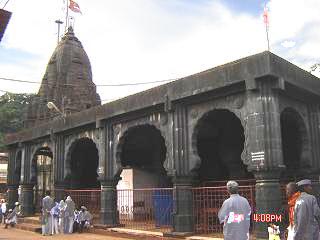
Bhimashankar Temple is a Hindu temple dedicated to Shiva situated in its eponymous village, Bhimashankar, in Pune district of Maharashtra. It is a key pilgrimage centre and contains one of the 12 Jyotirlingas. The temple's Shiva lingam is one of the three Jyotirlingas of Maharashtra. The mandir is situated on a mountain, 110 kilometers away from Pune. The temple's vicinity has rare plant and animal species. The mandir is located in Khed taluka, in the Bhimashankar forest range.

The Westwoods Trails is an extensive hiking trail system in Guilford, Connecticut. The trail system has approximately 39 miles (63 km) of trails with features including caves, lakes, streams, rivers, and interesting rock formations. The preserve extends across land owned by the Guilford Land Conservation Trust, which also owns many other land parcels across the town which provide hiking trails, and the State of Connecticut. The trails are accessible for walking, running, and mountain biking. Hunting is only allowed on state land during the season.
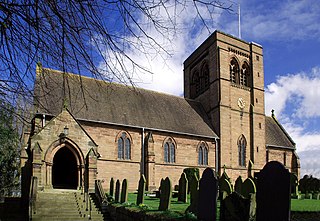
Norley is a village and civil parish in Cheshire, England, north of Delamere Forest, near the village of Cuddington. The population at the 2011 census was 1,169. Its name is derived from “Norlegh”, which means “north clearing”.
Dr. Carl Wieland is an Australian young Earth creationist, author and speaker. He was the managing director of Creation Ministries International, a Creationist apologetics ministry. CMI are the distributors of Creation magazine and the Journal of Creation.
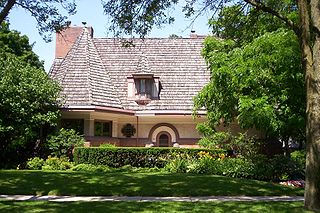
The Chauncey L. Williams House, in River Forest, Illinois is a residence designed by Frank Lloyd Wright. The house was built in 1895 of Roman brick and plaster. It was one of Wright's earliest Chicago commissions.
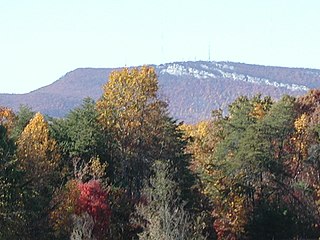
The Sauratown Mountains, which are sometimes called "the mountains away from the mountains", are an isolated mountain range located within Stokes and Surry counties in the U.S. state of North Carolina. The vast majority of the range is located in Stokes County. Although the range occupies only 5% of Stokes County's area, it dominates the county's scenery from almost every direction. The Sauras rise sharply 800 to 1,700 feet above the surrounding terrain.

The Nathan G. Moore House, also known as the Moore-Dugal Residence, is a house designed by Frank Lloyd Wright. The house was built one block south of Wright's home and studio at 333 Forest Avenue in the Chicago suburb of Oak Park, Illinois. It was originally completed in 1895 in the Tudor Revival style at the request of client Nathan Moore. Wright obliged his client's wishes, but long after disliked the house for its adherence to historical styles.

Harney National Forest was established by the U.S. Forest Service in South Dakota and Wyoming on July 1, 1911, with 642,550 acres (2,600.3 km2) from part of Black Hills National Forest and other lands. On July 1, 1954, the entire forest was added to Black Hills and the name was discontinued.

The Blue-Blazed Hiking Trail (BBHT) system, managed by the Connecticut Forest & Park Association (CFPA), and the related trail systems documented in the two-volume 19th Edition of the "Connecticut Walk Book" comprise over 800 miles of hiking trails in Connecticut.
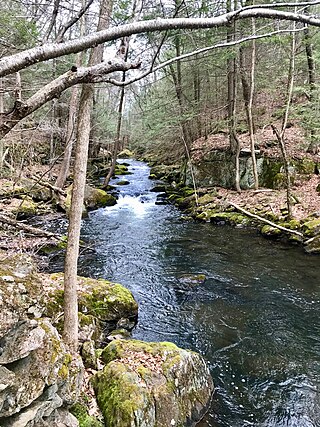
The 'Hancock Brook Trail' is a 2.8-mile (4.5 km) Blue-Blazed hiking trail Waterville Section of the City of Waterbury in New Haven County close to the borders of Thomaston and Plymouth, Litchfield County, Connecticut. It is contained overwhelmingly in a section of the Mattatuck State Forest bounded by Hancock Brook on the east, Thomaston Avenue on the west and Spruce Brook Road / Route 262 to the north.
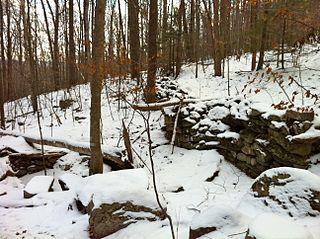
The American Legion State Forest Trails is a system of Blue-Blazed hiking trails in the Pleasant Valley section of Barkhamsted, Connecticut. The trails, which collectively total 3.18 miles (5.12 km) in length, are entirely within American Legion State Forest.
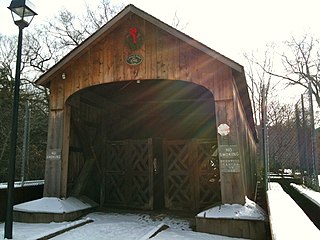
The Salmon River Trail is a 6.9-mile (11.1 km) Blue-Blazed hiking trail in Colchester, and East Hampton, Connecticut and is almost entirely in the Salmon River State Forest and Day Pond State Park. Almost all of the trail is in Colchester, the parking lot and part of the Comstock Covered Bridge over the Salmon River are in East Hampton.

The Chatfield Trail is a 4.6-mile Blue-Blazed hiking trail located within the town of Killingworth, Connecticut.

HMCS Forest Hill was a modified Flower-class corvette that served with the Royal Canadian Navy during the Second World War. She served primarily as a convoy escort in the Battle of the Atlantic. She was originally laid down by the Royal Navy as HMS Ceanothos but was never commissioned into the RN, being transferred to the RCN before completion. She is named for Forest Hill, Ontario, a town that was eventually amalgamated into the larger city Toronto, Ontario.















